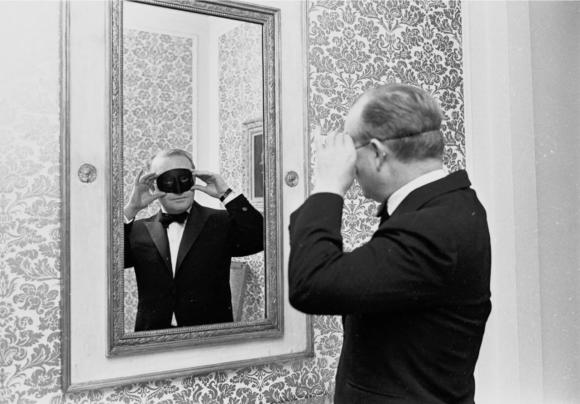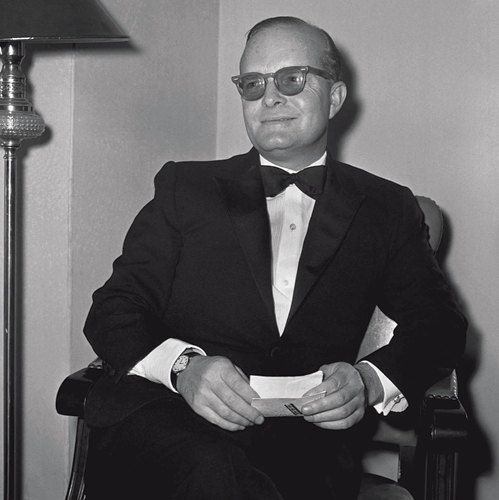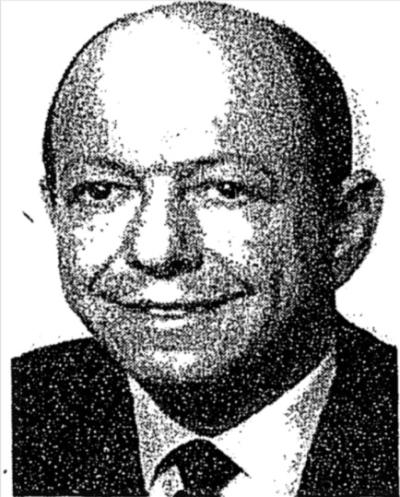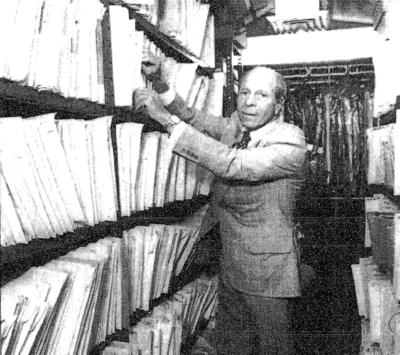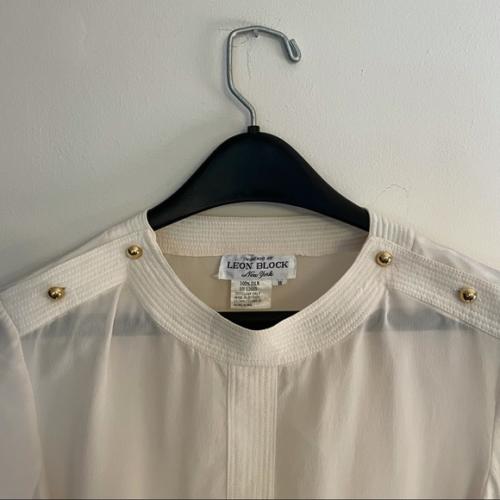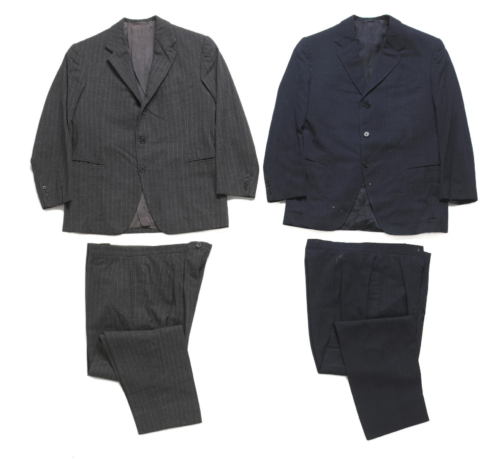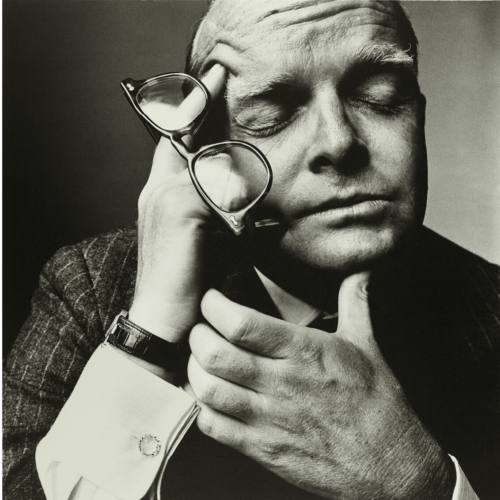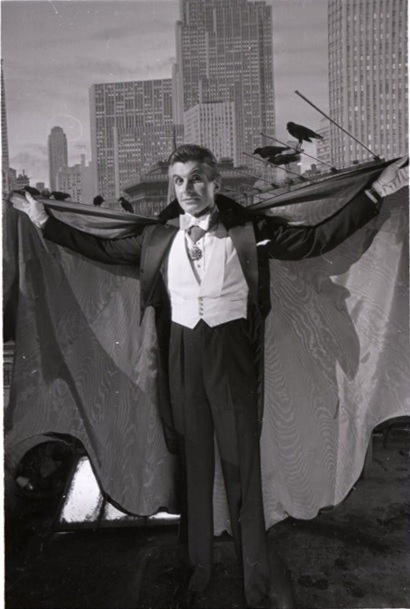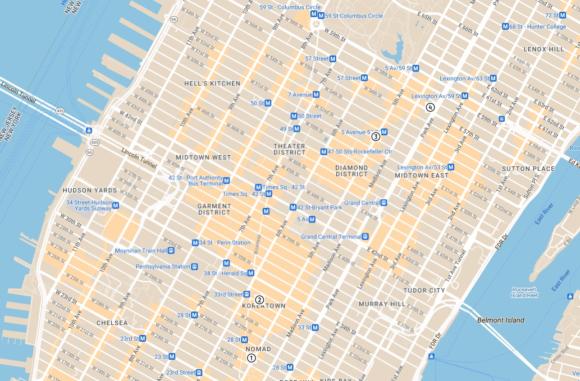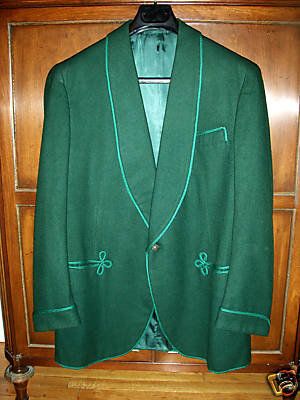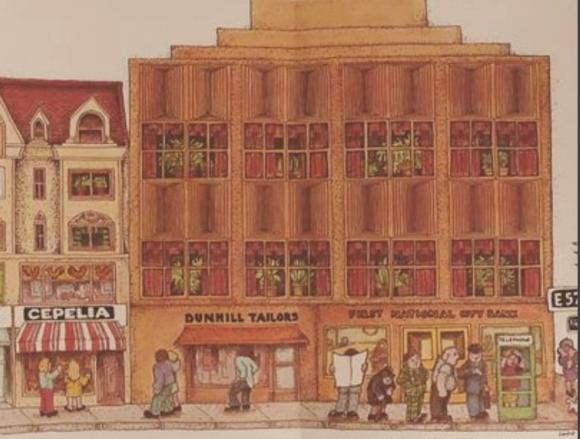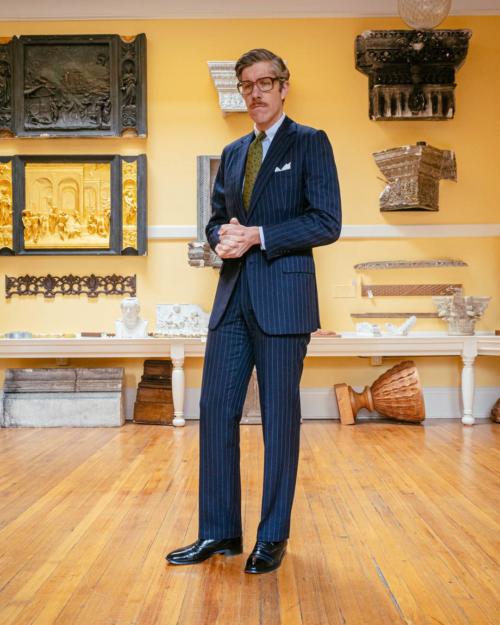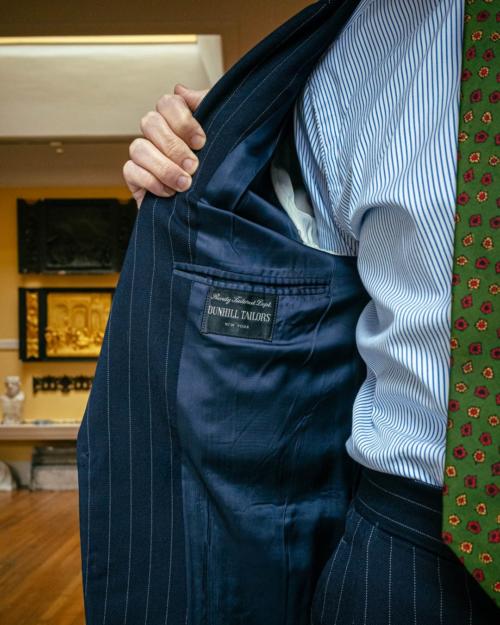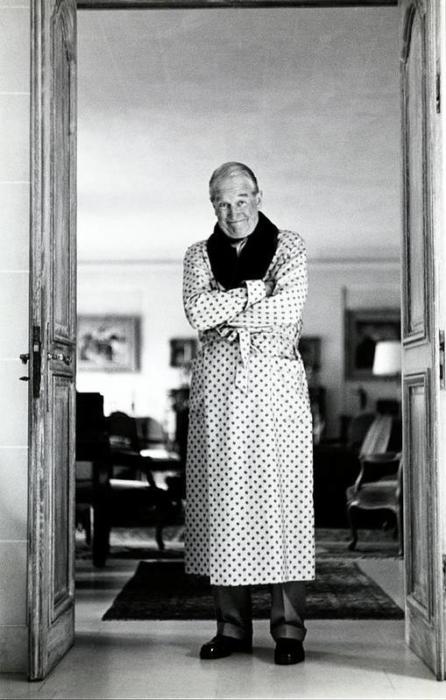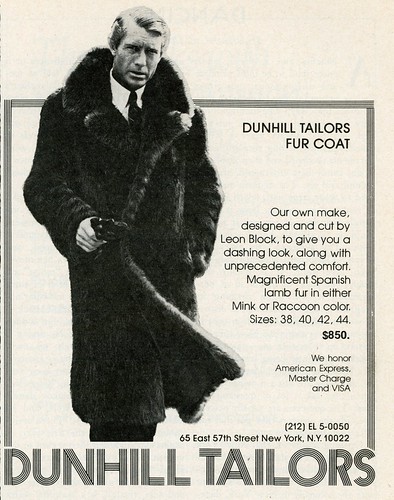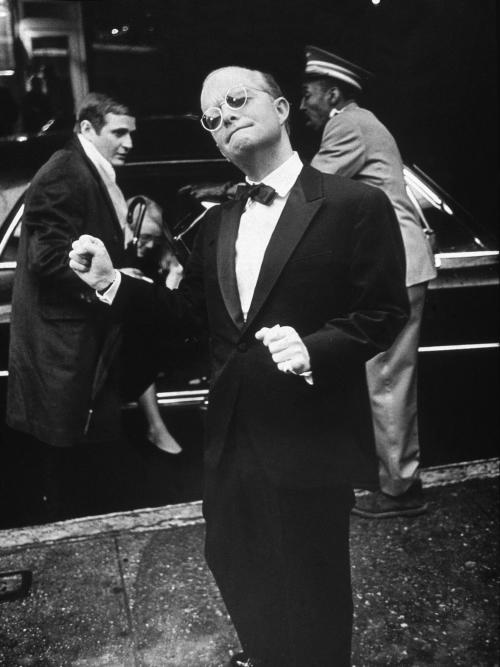*This text is a part of a collection that appears on the historical past of New York’s bespoke tailoring. You may see the primary, introductory article right here and a subsequent piece on Invoice Fioravanti right here*
By Manish Puri
It’s 1966 and also you’re Truman Capote.
You’ve simply revealed In Chilly Blood – a novel, hailed by the New York Occasions as “a masterpiece”, that may go onto grow to be the second best-selling true crime ebook in historical past.
You’re flush with money and getting ready to host “The Social gathering of the Century” within the Grand Ballroom of the Plaza Resort. You’ve obtained RSVPs from a fabulously eclectic group – movie stars, musicians, artists, tycoons, and extra younger princesses than Disney. The Peter Duchin Orchestra are tuning up and 450 bottles of Taittinger champagne are on ice.
However there’s one burning query: what are you going to put on?
You peer into your closet and attain on your much-loved three-year-old dinner go well with. The jacket has a one-button closure, jetted hip pockets and peak lapels which might be completed with silk. The label on the within breast pocket says ‘Dunhill Tailors / New York’.
Based in 1923, Dunhill Tailors was run by the brothers Block who (appropriately sufficient) hailed from that Metropolis of Brotherly Love, Philadelphia. The elder, Norman (beneath), moved to New York to check at Columbia School, however discovered the lure of the Roaring Twenties to be too robust, and rapidly turned “a fixture on the society nightclub circuit, a younger dandy in white tie and tails”.
Norman’s father (William, who’d emigrated from Germany and subsequently constructed a profitable actual property enterprise) wasn’t particularly impressed and demanded that his 19-year-old son knuckle down. They agreed {that a} boutique promoting well-made garments to Norman’s society friends would make for a good (and doubtlessly profitable) dwelling – fairly the leap contemplating Norman would later boast “I can’t sew a sew”.
What Norman did possess (and I’ve discovered this to be true of anybody that enjoys a celebration) was an appreciation of how one can set the temper.
And so, to infuse the fledgling enterprise with an air of time-worn sophistication, he casually purloined a reputation from a neighborhood tobacco emporium referred to as Alfred Dunhill of London – a call that tied him up in varied authorized actions from 1957 to 1985, when the brothers ultimately retired and bought Dunhill tailors to Dunhill Holdings for $3.25m.
(In defence of Norman, Block Tailors solely actually works as a model title when you’re promoting ready-to-wear).
In 1928, youthful brother Leon (above) joined the enterprise, and the pair launched into a number of journeys to London, commissioning fits from the nice bespoke homes of Savile Row alongside the best way.
As soon as again within the US, these fits had been picked aside to attempt to unweave the rainbow of English fashion and construction to assist inform the Dunhill Tailors home look.
Of the siblings, Leon turned out to have the higher eye for design and so he was principally answerable for the look of their customized suiting. His abilities even stretched to ladies’s clothes, which he bought below an eponymous label as a result of “Leon Block of Dunhill Tailors [would require] a label so huge there would hardly be room for a lining”.
Not surprisingly, this criss-crossing between New York and London begat a home fashion that Bruce Boyer outlined to us as “mid-Atlantic, a little bit of Ivy combined with a little bit of British, characterised by a middle-of-the-road philosophy of every part moderately. “Quiet but fashionable […] well-fitted clothes that spoke softly however carried a whole lot of weight”.
It was a mode that finally secured a spot within the Met’s assortment (the go well with gifted by Lauren Bacall in 1967), regardless of the waning affections of the town’s tastemakers over time.
This New York Journal article from 1988, written a number of years after the sale to Dunhill Holdings, pulls no punches: “All in all, it’s extra of a continental (quite than Ivy) board-chairman fashion. In a method, that’s its downside. The go well with had its heyday within the late fifties. Now it’s in want of an replace, particularly with Dunhill keen to draw a brand new era of consumers”.
That heyday fashion is exemplified by a number of clothes supplied at public sale by Bonhams in 2006.
Amongst the heaps that comprised The Non-public World of Truman Capote had been two fits – a gray pinstripe flannel and a navy wool (above) – that had been typical of Dunhill Tailors within the late 50s and early 60s: “conservatively slender” lapels, pure shoulders, side-vents, jetted pockets, three-button closure and with a slim profile to assist the wearer seem trim on the waist.
After cautious examination of the pattern-matching on the shoulder and sleeve, I’m satisfied that the auctioned gray pinstripe (commissioned in 1965) is the exact same go well with worn by Capote on this famend Irving Penn portrait (photographed in 1965).
And Capote was simply certainly one of Dunhill Tailor’s illustrious and moneyed clientele (a bespoke go well with in 1982 price $1500). “The higher crust”, as Norman referred to them, “[men who] know precisely what they’re shopping for and might consider the materials and workmanship and styling exactly for probably the most half”.
Through the years, the Block brothers counted these males amongst their common prospects:
- Cary Grant: “He developed his distinctive stroll as a result of [] he discovered that his garments seemed higher that method”
- Paul Newman: “An exquisite individual however [] I do not assume he ever cared that a lot about garments and now he likes to look in blue denims”
- A number of Rockefellers: “We will not promote David Rockefeller of the Chase Manhattan Financial institution a hand-sewn go well with, he occurs to have a determine that may be completely stuffed in a ready-made go well with from off the rack, so he sensibly takes benefit of the very fact.”
- George Hamilton: Whose Dracula they outfitted for the 1979 movie Love at First Chunk – presumably utilizing a supernatural shoulder.
And, because the enterprise grew in prominence, Dunhill Tailors responded by moved their premises uptown over time.
Beginning in 230 Fifth Avenue (which is now house to a very fashionable rooftop bar), then to 39 West 32nd Road, onto 1 West 52nd Road, earlier than lastly settling at 65 East 57th Road in 1955 – the place they remained for thirty years till they retired.
The shop on 57th Road (“the grand boulevard of Manhattan’s Crosstown routes”) was an understated however often forbidding area with “dimly lighted carriage lamps, darkish panelled partitions and deeply cushioned leather-based chairs”. The form of place that the jacket beneath, a cashmere smoking piece made in 1981 for John Hay Whitney, would have appeared very at house.
When an out-of-towner remarked that the premises (pictured above in a 1972 illustration by Loretta Lustig) retailer seemed like a personal membership from the surface, Norman, ever the attentive host, assured him that he was open to all and demonstrated this by inviting him in and allowing the customer to buy $4000 of merchandise.
It was this mix of Norman’s nostril for enterprise and “debonair method” that seduced many a buyer (“one fellow instructed me that he went in for a few ties and ended up with a camel hair polo coat”) and helped develop annual gross sales to over $2 million a yr within the mid-Seventies.
By this level Dunhill Tailors had been providing customized/bespoke suiting and a variety of ready-to-wear clothes that prolonged to fur coats, though customized suiting nonetheless accounted for over $1 million a yr within the early Eighties.
That ready-to-wear vary included robes, fur coats (see two pictures beneath) and fits that Alan Flusser rhapsodised about in his 1981 ebook Making the Man: “For the worth, there may be in all probability no higher made ready-made go well with wherever on the earth”.
An ideal instance is worn above by Bronx-resident Brandon Mitchell above, who picked up this navy worsted pinstripe in a Salvation Military in New York. Most probably from the Seventies, it’s labelled as made by Dunhill Tailors’ “Prepared Tailor-made Division”. Over an e-mail change he kindly supplied some extra particulars:
“It is reduce with extra form than a typical American go well with of the period (it is darted) and is two-button versus the standard three. It additionally has double vents, which I believe will need to have been significantly uncommon within the US on the time. All of those particulars, plus the slight roping on the shoulders, level to an American tailoring operation that made fits that pointed subtly within the route of Savile Row, whereas nonetheless being a bit much less inflexible than what the Row is understood for, and using a considerably pure shoulder. The trousers, which take a belt, had been initially flat entrance with turn-ups; as a result of my peak they’re now flat entrance with out turn-ups.”
There was one man who appeared resistant to the charms of Dunhill Tailors. Norman Block recounts a go to from (then Vice-President) Lyndon B Johnson:
“He got here into the shop in search of a sports activities coat. Discovering that the coat was slightly tight, the fitter pulled out a jack-knife to chop a seam. Instantly, two Secret Service brokers grabbed him as Johnson rotated and noticed the knife. ‘Effectively, boys, it is about time I caught my aircraft,’ Johnson declared, and the three of them left with out one other phrase.”
Manish is @The_Daily_Mirror on Instagram
